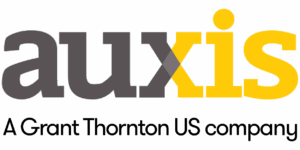Client Profile
Private equity backed, the client is a leading global packaging wholesaler who manufactures a range of packaging products for the beauty industry including tubes, lipsticks, mascara, perfume and lotion pumps, applicators, as well as packs filled with formula, comfort kits, etc. They serve a wide range of cosmetic customers across the world including both independent emerging brands and long-standing prestigious industry leaders. The client is headquartered in Europe and Auxis is currently providing support to the North American division.
Business Challenge
Prior to engaging Auxis, the client had grown through a series of acquisitions where various business lines were carved out from larger organizations. Typically, the purchased business units’ support transitioned from a shared service to the manufacturing plant during the acquisition, leaving the client with an expensive, fragmented, & inefficient back office for Finance and Accounting.
The client operated multiple ERPs, lacked standard practices for key finance functions (AR, AP, and General Accounting & Close), and were left with an operating model that couldn’t scale. The Plant Controllers were continuously dragged into operational fires rather than being able to focus on providing strategic support to the operations.
“With a decentralized, inefficient finance operation, the client had a cost reduction target of 40% in back office costs with a payback of less than one year”
The client had considered outsourcing the Finance function for North America to an Asian provider, however the difference in time zones, the inability to reasonably travel between the provider’s and client’s sites, and the lack of Spanish language skill needed to support future expansion to LATAM made this option challenging.
The client had a cost savings target to reduce back office support costs by 40%, and wanted to be up and running quickly, with a sufficient ROI to payback in less than one year.
Solution & Approach
Auxis performed a rapid BPO Opportunity Assessment to determine if there was a business case for nearshoring from Costa Rica. Auxis’ Finance Transformation team compared cost and efficiency metrics of the current operations vs. industry benchmarks and the anticipated improvements if the client was to centralize back office functions within Auxis’ world-class Nearshore Center in San Jose, Costa Rica.
Auxis designed a future operating model that centralized key back office activities for the 6 different plants in North America, realigning resources by function (AP, AR, & GL), allowing for specialists to efficiently manage the work for the entire North American footprint, rather than with generalists at each location.
BPO Scope:
- Accounts Payable
- AP Invoice Processing
- Payments
- Vendor Inquiries
- Accounts Receivable
- Cash Application
- General Accounting
- Account Reconciliations
- Journal Entries
- Month-End Close
This fundamental operating model change would allow the retained Plant Controllers at each location to stay out of the operational “fires” and focus on supporting business operations.
Results
By leveraging Auxis’ design and rapid migration approach, the client stood up a centralized Finance & Accounting outsourcing team for the 6 different business units in less than 4 months, achieving a cost reduction of over 45%.
Auxis’ nearshore location in Costa Rica has allowed the BPO team to work as a true extension of the client’s team, operating on the same schedule as the plants. The client and the Auxis team routinely travel to each other’s locations to ensure strong collaboration, continuity of practices and cohesiveness of the team.
Additionally, Auxis, as a world-class operator of shared services, has brought on technologies and best practices to provide greater visibility, efficiency, and service excellence. These tools include:
- Power BI as its dashboard and reporting engine for operational reports
- Trintech’s Adra Financial Close Management & Automated Reconciliation Tool to allow for a faster, more controlled close
- SharePoint for documentation & image repository and workflow
Having one team supporting all plant locations has enabled the business to establish standard business rules across all operations, improving operational control, visibility, and performance for the entire organization. For example, common suppliers across the multiple plant locations are now managed consistently, and the client was able to have better insight into spend and potential discounts available.
Lastly, as the operation has matured, the new BPO operating model has given the client the flexibility to seamlessly transition plants that have been acquired or sold on or off the support model as needed.
